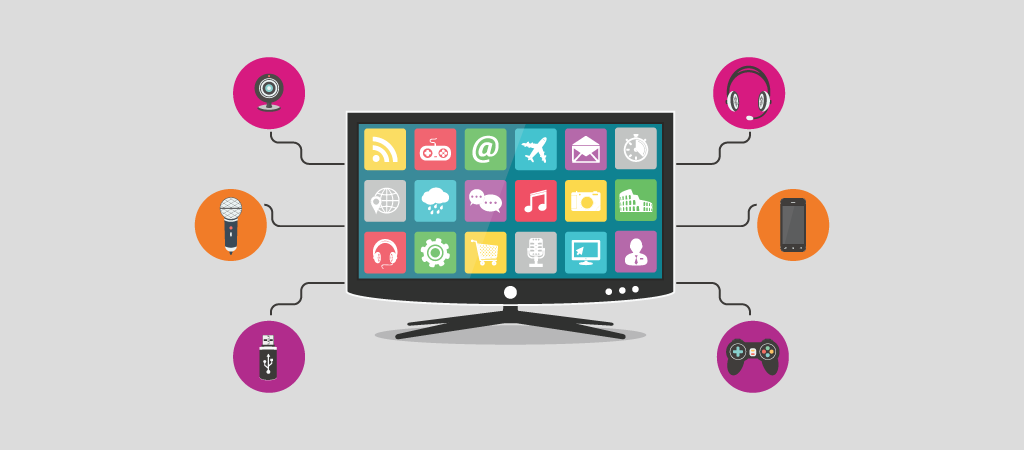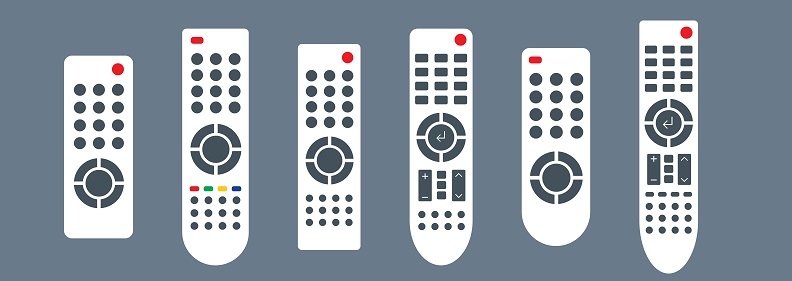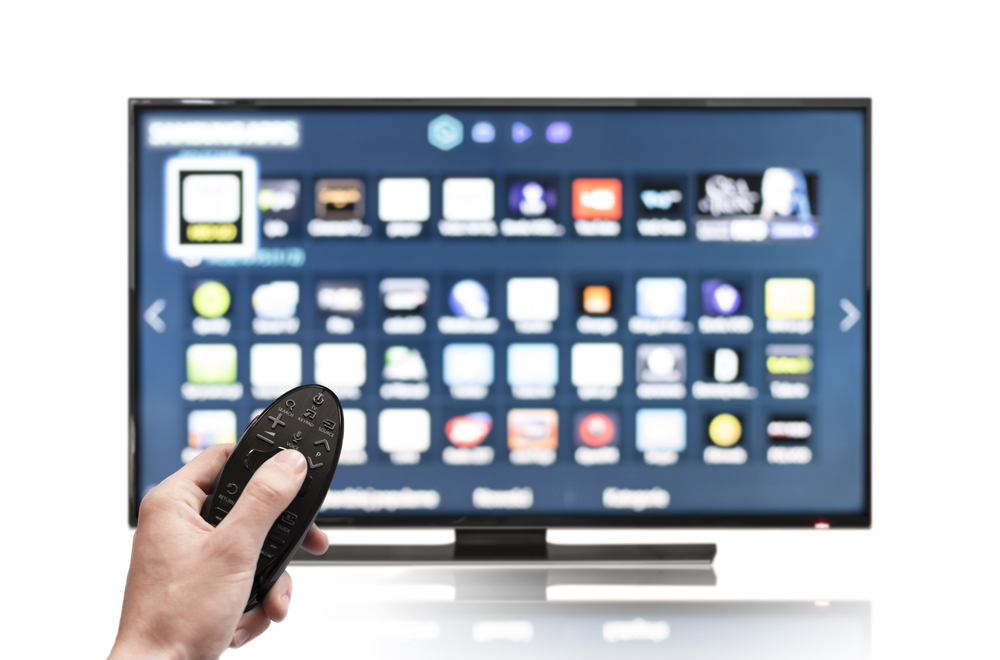Top 6 Key Considerations When Developing Smart TV Application
We are living in a smart economy. Every passing day we witness a surge in smart and connected products may it be Smart Home, Smart Phones, Smart Watches or Smart TVs. The rise in digital technologies presents an opportunity to develop cutting-edge products that are both engaging and intuitive. Companies wanting to ride the smart bandwagon are putting in a lot of efforts on end user experience. Smart products aren’t anymore about functionalities but the kind of experience they offer to customers. Apart from the technology at the backend, the design on the frontend has started taking a stronghold.
Talking specifically about Smart TVs, the TV ecosystem has evolved manifolds. Consumers previously could consume only specific media over the television, but now the choices are widening.
Smart TVs now come with enhanced features and consumers can consume more information from the comfort of their homes. Marketers that were thinking mobile-first a few years back have started realizing the need for having a connected tv strategy with Smart TVs quicking gaining traction and dominating the mindspace of consumers. A lot of companies now offer Smart TV applications so that users get a seamless multi-channel experience. Users can interact with a Smart TV app, browse their favorite content, purchase products, and do much more.
The entire Connected TV landscape comprises Smart TVs, Live Streaming Devices and Gaming Consoles.
According to Business Insider, gaming consoles account for 54% of the overall connected TV landscape, while smart TVs holds 38% and streaming devices sites at 6%.

Various players dominate the Smart TV industry. Most companies that leverage Smart TV application development develop apps for multiple platforms such as:
- Apple TV
- Android TV
- Roku TV
- Samsung Tizen
- LG
- Panasonic
- Amazon Fire
- Smart Alliance
The players mentioned above have a foothold in the industry and are already making the best use of the available technologies with them to offer a superior TV watching experience to their customers. However, companies investing in Smart TV apps, find it difficult to build and test custom app for each of these platforms due to different SDKs and guidelines.
In this blog, we bring to you top key considerations to follow while developing a Smart TV app:
1. Use of right skill sets or techniques: Designing an application for mobile is different than designing it for a Smart TV. While mobile requires more considerations in terms of finger targets, real estate and gestures, Smart TV gives an opportunity to widen the design scope.
Following are the most relevant skill sets required for developing a Smart TV application:
- Know platform-specific SDKs
- Deep knowledge of HTML5, CE-HTML and CSS when working on Smart TV app development.
- Comprehensive knowledge of software architecture for correct execution of Smart TV app development.
- Thorough understanding of complex Java applications and AJAX for creating an immersive and rich Smart TV app with high interactivity.

2. Distances and screen sizes: The viewing configuration differs when watching television and when interacting with a smartphone or a tablet. When reviewing distance, resolution and screen sizes angular resolution becomes a key factor. Angular resolution is the ability of an individual’s eye to detect small details in an object. However, this factor will vary depending upon an individual’s eyesight. The unique thing about this factor is that the principle is applied to everyone. From a user perspective, developers should keep in mind or should consider the fact that how would the screen appear from a certain distance. Also, technical expertise is required when deploying codes, APIs and for leanback support library.
Following support libraries must be included for apps using Leanback support library:
- v4 support library
- v17 leanback support library
- v7 recyclerview support library
3. Consider remote control: It is important to consider the user experience with a remote control while designing Smart TV applications. Different platforms are experimenting with the way they could provide more features with a remote control. Apple TV, for example, is making use of touch inputs whereas some of the platforms such as Amazon Fire Tv is making use of voice input.
Few more points to keep in mind:
- Avoid complex and detailed navigations.
- A deep understanding of remote control as different devices make use of different remote controls.
- Understand limitations of remote controls.
- The names of the icons and buttons on the remote must match with the action which will occur on the user’s screen.

Even on Smart TV, for users, a remote control is a navigational interface. This makes the developer design apps where navigation is easily accessible and simple.
4. Navigation: Although Smart TVs offer a larger real-estate, the navigation should still be intuitive. It should not confuse users with multiple options.
Following are some key factors that will help to enhance your user experience through navigation:
- Avoid using complex navigation.
- Make sure that the navigation is intuitive.
- There must a perfect match between navigation structure and content. Well said by Steve Krug- “Navigation reveals content”.
- It is important for a user to know which screen he is on.
- Make the navigation easy to understand. One way of doing can be writing the screen name on the navigation bar.

5. Focus obvious: With the significant growth in the TV industry, companies need to develop apps that can stand the competition.
Following are some key points that one should keep in mind:
- Make the text readable
- Less is more, so add few words.
- Make sure your words match the icons
- High contrast
- Avoid using acronyms
- Make sure that the content does not sidetrack the focus.
- Know that there is a huge difference between how focus works on TV box and how it works on a mouse for a web.
- Design in such a way that the user is able to quickly skim through the content and at the same time is able to understand it.
6. Test and iterate: “Measure twice, cut once” this saying is very well applied to developing an app. Many players in the market are already exploring this domain in order to provide a seamless digital experience to their end users. This makes testing of an application an essential and a key factor for succeeding in Smart TV space. Moreover, a proper test should be conducted for scenarios related to streaming.Testing the app before the launch becomes a vital step as it will allow to straighten out any crannies and gaps before it reaches the target or mass market. A Smart way is to know whether you are on the right track or not is to test the prototypes when designing the app. Developers can eliminate all the hitches by only testing the app. This, in turn, will save time and efforts. Developers may sometimes forget the importance of Smart TV network testing. However, testing Smart TV apps require a lot of efforts as testing is platform-specific and there can be a possibility that most testing teams are new to the platforms. Testers and developers should consider platforms store guidelines for verifying applications.
Conclusion
There is still time for Smart TVs to function as a computer.However, Smart TV is getting hold of elements that are there in a computer like navigation. With this, the world of TV has changed. The decision pattern of the users related to selecting a Smart TV is getting finer with time and this is becoming a challenge for companies to provide a rich user experience. Building a Smart TV application not only helps in increasing the viewership but also helps in expanding the reach and ultimately boosting the overall brand experience.
Redefine your Smart TV experience today!

